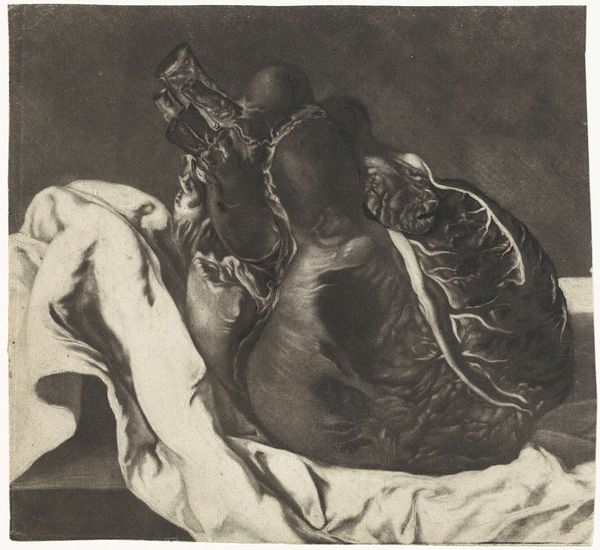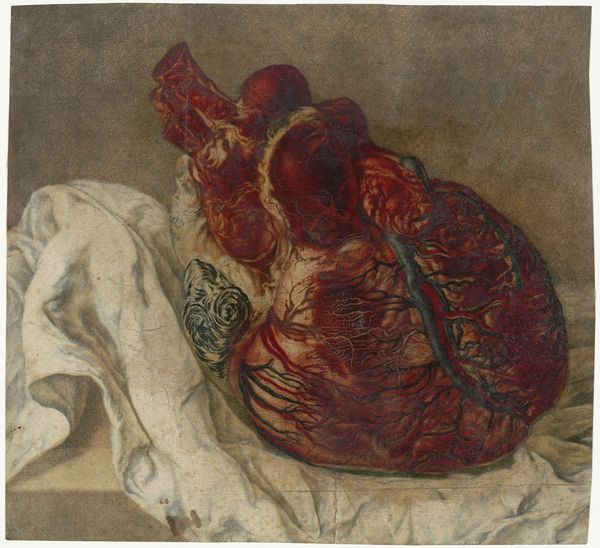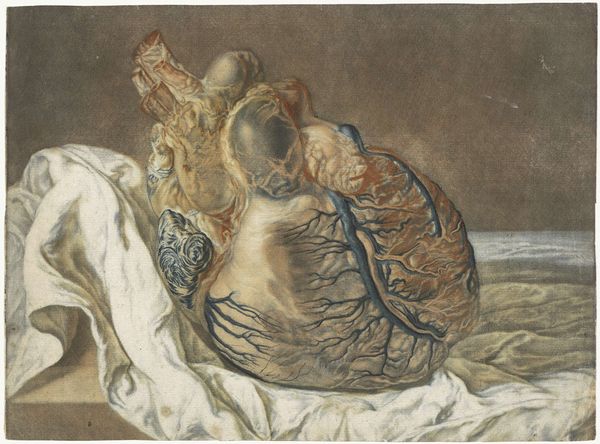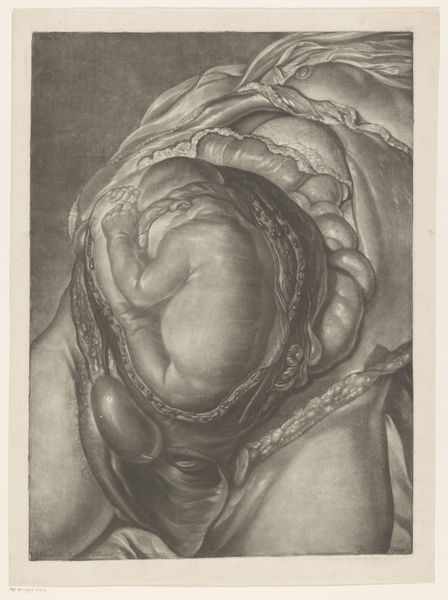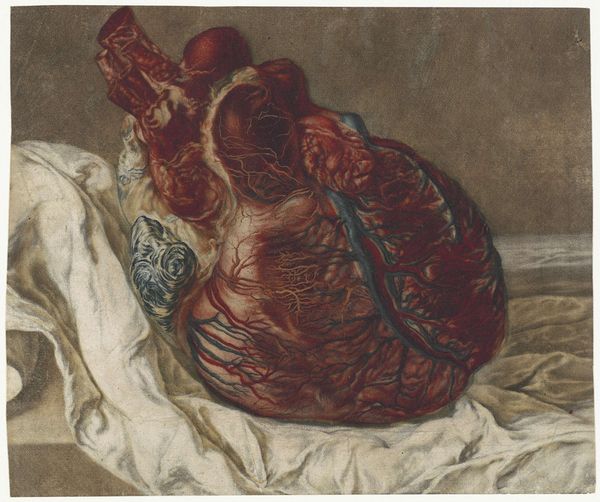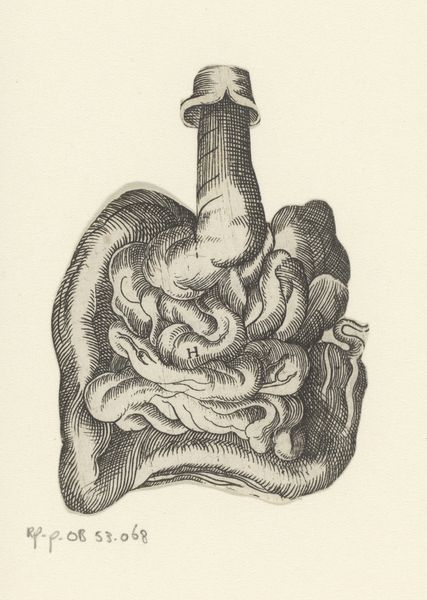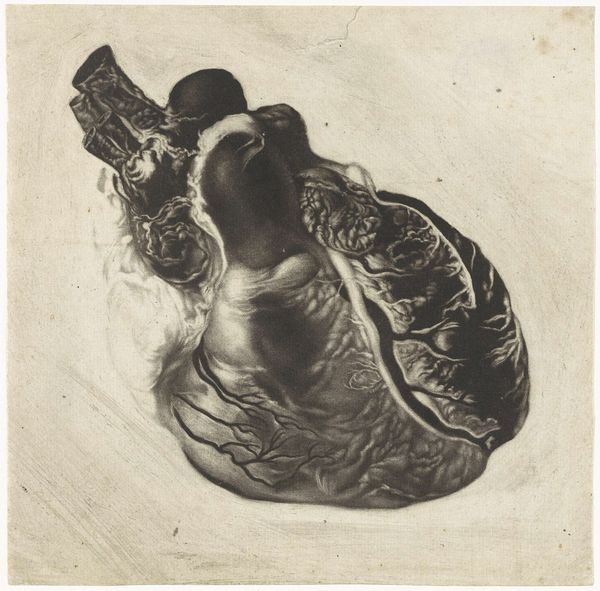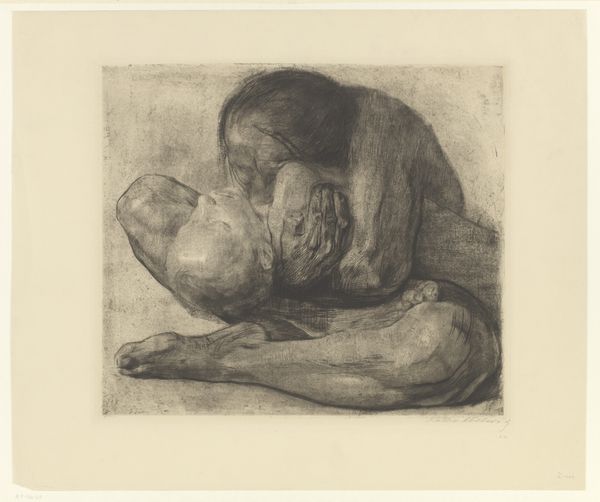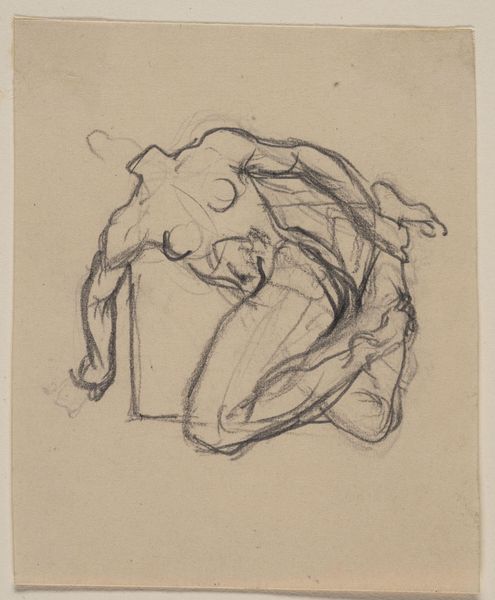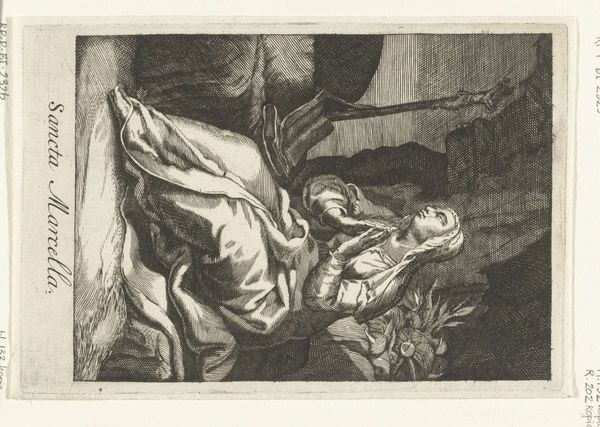
print, engraving
#
baroque
# print
#
vanitas
#
history-painting
#
engraving
#
realism
Dimensions: height 198 mm, width 221 mm
Copyright: Rijks Museum: Open Domain
Curator: This print, from somewhere between 1700 and 1750, is entitled "Prints of the Brain and the Heart," and it's attributed to Jan l' Admiral. It's rendered as an engraving. The material details add an intriguing layer. Editor: My immediate reaction is one of slightly uneasy awe. The stark realism of the heart, particularly its exposed ventricles, feels strangely… intimate. Like witnessing a very private moment. It is rather confronting. Curator: Yes, that immediacy resonates. Thinking about this work through a modern lens, one can’t ignore the implications of such literal representation, especially given early modern understandings of medicine and the body and their intersectional association to morality. Editor: It is very visceral. This pairing of the heart with the brain places them as symbols of what, emotion versus intellect, perhaps? The Baroque period certainly favored strong symbolic language. The heart, meticulously rendered, displays every vein, every valve. Is this perhaps a commentary on mortality, a 'vanitas' still life, focusing on these essential human organs? Curator: Exactly. Thinking historically, images of the human heart and brain were of deep scientific and also societal and cultural value. They reflect early attempts at understanding life, death, and identity, especially for bodies deemed “other.” What did this symbol of human organs mean during these times? Editor: This rendering certainly lends itself to the vanitas tradition; that stark portrayal seems meant to invoke our fragility, a visual memento mori. The cloth it lays upon gives me the chills... it's reminiscent of death cloths. Curator: I wonder how these "portraits" are gendered, too. The hyper-realistic texture challenges any romantic ideas about humanity. Who does such an unflinching vision of mortality implicate or absolve, and why? Editor: Reflecting on its symbols now makes it more complex, seeing echoes of the Baroque obsession with symbolism mingling with what feels like a modern awareness of how medical images shape how we view and internalize mortality itself. It all hits harder somehow. Curator: Yes, examining these images reminds me how early anatomy was as much about societal concerns and prejudices as it was about scientific knowledge. Editor: Absolutely. This piece makes me reflect on cultural memory encoded in symbols; how consistently we turn to images of hearts and brains to understand ourselves. It is haunting.
Comments
rijksmuseum about 2 years ago
⋮
Around 1735 Jan l’Admiral printed several remarkable anatomical prints in colour, among others on commission for the celebrated physician Frederik Ruysch. For his illustrations of the cerebral membrane (the skull of an unborn child) and a human heart he experimented with ever different colours, and made various versions of them. The objective was to provide medical practitioners with the most precise and realistic images possible.
Join the conversation
Join millions of artists and users on Artera today and experience the ultimate creative platform.
